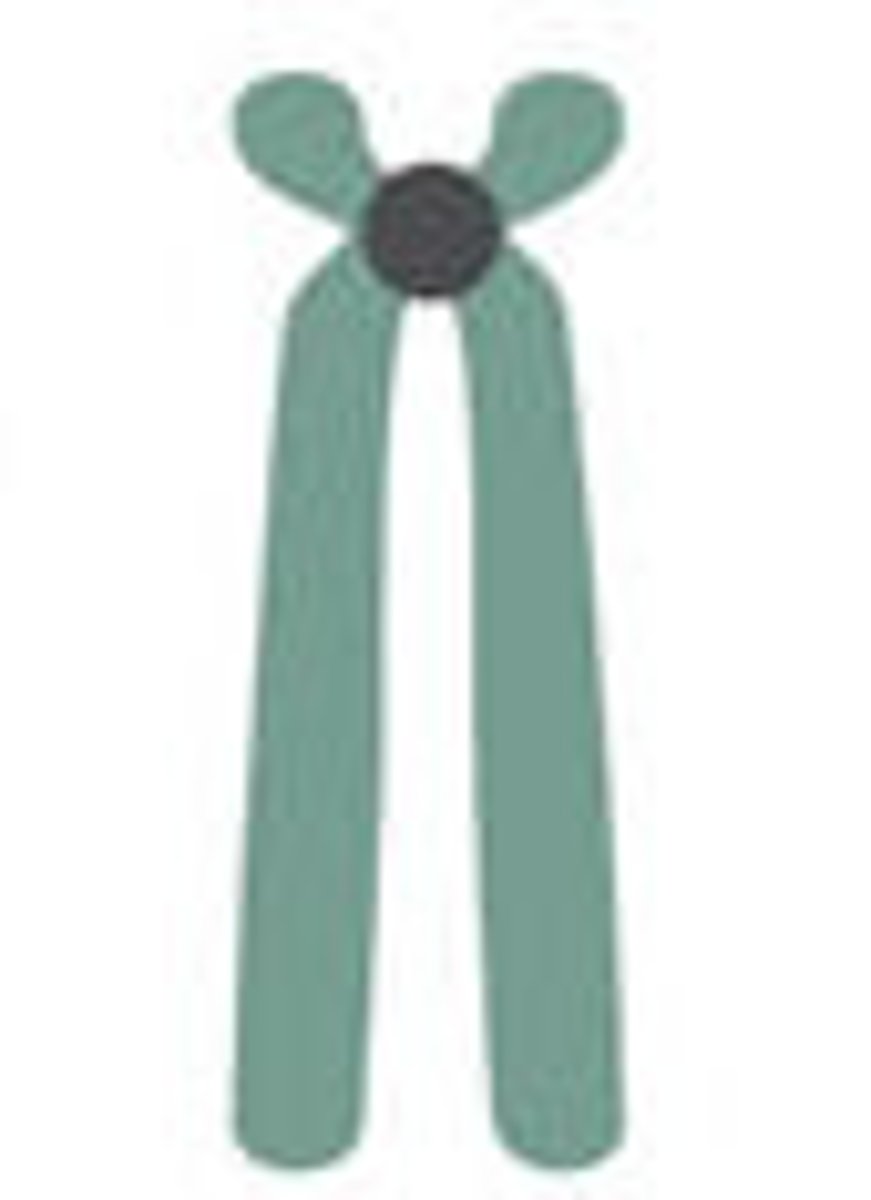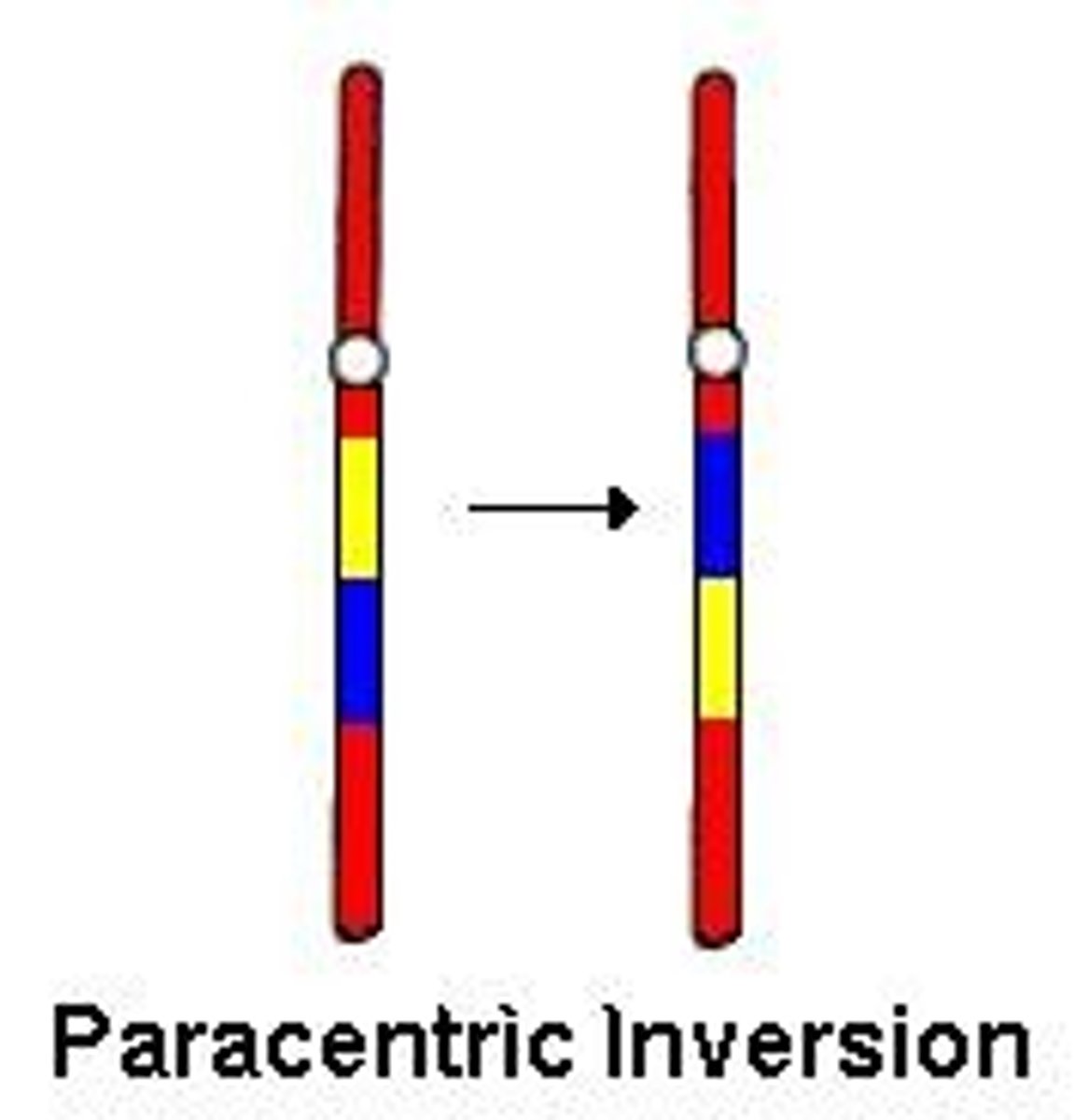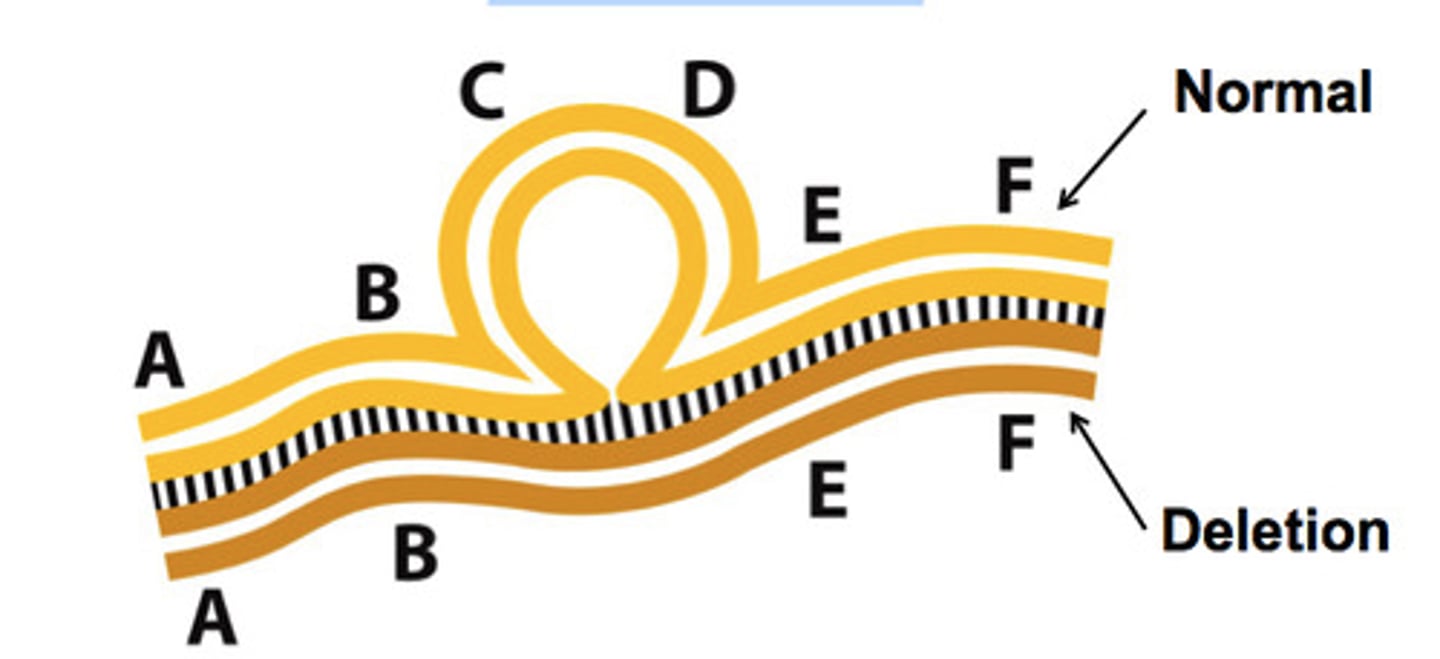Chapter 8: VARIATION IN CHROMOSOME STRUCTURE AND NUMBER
1/66
There's no tags or description
Looks like no tags are added yet.
Name | Mastery | Learn | Test | Matching | Spaced |
|---|
No study sessions yet.
67 Terms
Chromosomal aberrations
What are substantial changes in chromosome structure or number called?
To see band patterns that help distinguish chromosomes
Why is it useful to stain chromosomes?
location of centromere, size, banding patterns
Cytogeneticists use what three main features to identify and classify chromosomes?
karyotype
A micrograph in which all of the chromosomes within a single cell are arranged in a standard fashion
metacentric
Chromosome in which the centromere is near the middle:
metacentric

submetacentric

acrocentric

telocentric

c
A chromosome that is metacentric has its centromere:
a.) at the very tip.
b.) near one end, but not at the very tip.
c.) near the middle.
d.) at two distinct locations.
d
Staining eukaryotic chromosomes is useful because it makes it possible to:
a.) distinguish chromosomes that are similar in size and centromeric locations.
b.) identify changes in chromosome structure.
c.) explore evolutionary relationships among different species.
d.) do all of the above.
1. The total amount of genetic material in the chromosome can change (deletion/duplication)
2. The total amount of genetic material remains the same, but is rearranged (inversion/translocation)
Mutations can alter chromosome structure two ways:
deletion
The loss of a chromosomal segment
duplication
The repetition of a chromosomal segment compared to the normal parent chromosome
inversion
A change in the direction of part of the genetic material along a single chromosome
translocation
A segment of one chromosome becomes attached to a different chromosome
simple translocation
One way transfer; a piece of a chromosome is attached to another chromosome
reciprocal translocation
Two way transfer; two different types of chromosomes exchange pieces, producing two abnormal chromosomes with translocations
duplication, deletion
Which changes alter the total amount of genetic material?
c
A change in chromosome structure that does not involve a change in the total amount of genetic material is
a.) a deletion.
b.) a duplication.
c.) an inversion.
d.) none of the above.
pericentric inversion

paracentric inversion

homologous
Two or more genes derived from a common ancestor are
paralogs
Homologous genes within a single species are
gene family
Over the course of many generations, duplication can lead to the formation of a ___ consisting of two or more genes in a particular species that are similar to each other.
globin
A well-studied example of a gene family is the evolution of the ___ gene family found in humans.
14
The globin gene family is composed of __ paralogs that were originally derived from a single ancestral globin gene.
bind oxygen
Different paralogs carry out similar but distinct functions. All ___.
myoglobin
Globin that stores oxygen in muscle cells
hemoglobin
Globin that bind and transport oxygen via red blood cells
copy number variation (CNV)
A segment of DNA that varies in copy number among members of same species
- May be missing a particular gene
- May be a duplication
a
Which of the following statements is correct?
a.) If a deletion and a duplication are the same size, the deletion is more likely to be harmful.
b.) If a deletion and a duplication are the same size, the duplication is more likely to be harmful.
c.) If a deletion and a duplication are the same size, the likelihood of causing harm is about the same.
d.) A deletion is always harmful, whereas a duplication is always beneficial.
d
With regard to gene duplications, which of the following statement(s) is/are correct?
a.) Gene duplications may be caused by nonallelic homologous recombination.
b.) Large gene duplications are more likely to be harmful than smaller ones.
c.) Gene duplications are responsible for creating gene families that encode proteins with similar and specialized functions.
d.) All of the above statements are correct.
deletion loop

deletion heterozygote

inversion heterozygote
one homolog has inversion, the other homolog does not
crossing over
Inversion heterozygotes may produce abnormal chromosomes due to _____
heterochromatin
condensed (tightly wound) DNA; transcriptionally inactive - can't make mRNA
euchromatin
unwound (dispersed) DNA; transcriptionally active - can make mRNA
Break point effect
An inversion break point occurs in a vital gene
Position effect
A gene is repositioned in a way that alters its gene expression
inversion loop
For the normal and inversion chromosome to synapse properly, an ____ must form
paracentric inversion
dicentric bridge + centromere lost - inversion
pericentric inversion
duplication + deletion - inversion
Robertsonian translocation
Familial Down Syndrome is an example of
euploid
a chromosome number that is an exact multiple of a chromosome set (triploid, tetraploid, polyploid, etc.)
triploid
an organism that contains three sets of chromosomes
tetraploid
having four sets of chromosomes
polyploid
Organisms with three or more sets of chromosomes are also called ___.
aneuploid
not euploid; not an exact multiple of a set (trisomic + monosomic)
trisomic
a diploid cell with one extra chromosome
monosomic
a diploid cell that is missing a chromosome
b
Humans have 23 chromosomes per set. A person with 45 chromosomes could be described as being
a.) euploid.
b.) aneuploid.
c.) monoploid.
d.) trisomic.
translocation cross
During meiosis I, homologous chromosomes synapse with each other. For the translocated chromosomes to synapse properly, a _____ must form.
translocation cross

Alternate segregation
- Chromosomes diagonal to each other within the translocation cross segregate into the same cell following meiosis I
- One cell receives 2 normal chromosomes and the other receives 2 translocated chromosomes
- Leads to viable gametes
Adjacent-1 segregation
- Adjacent non-homologous chromosomes segregate into the same cell after meiosis I
- Both cells have one normal and one translocated chromosome
- Leads to 4 genetically unbalanced gametes
semisterility
An individual with a reciprocal translocation usually produces four types of gametes, two of which are viable and the other two, nonviable. This condition is termed ____.
a
In a trisomic individual, such as a person with trisomy 21 (Down syndrome), a genetic imbalance occurs because
a.) genes on chromosome 21 are overexpressed.
b.) genes on chromosome 21 are underexpressed.
c.) genes on the other chromosomes are overexpressed.
d.) genes on the other chromosomes are underexpressed.
d
Humans that survive with aneuploidy usually have incorrect numbers of chromosome 13, 18, or 21 or the sex chromosomes. A possible explanation why these abnormalities permit survival is because
a.) the chromosomes have clusters of genes that aid in embryonic growth.
b.) the chromosomes are small and carry relatively few genes.
d.) X-chromosome inactivation.
d.) both b and c.
endopolyploidy
Diploid animals sometimes produce tissues that are polyploid. This phenomenon is termed _____.
haplodiploid
In ____ species, which include many species of bees, wasps, and ants, one of the sexes is haploid, usually the male, and the other is diploid.
polytene chromosome
Chromosomes undergo repeated rounds of chromosome replication without cellular division. These doublings produce a bundle of chromosomes that lie together in a parallel fashion. This bundle is termed a ______.
salivary glands
In the ___ of Drosophila, homologous chromosomes double approximately 9 times.
polytene chromosome
The four types of chromosomes come together to form a very large ______.
chromocenter
The central point where the chromosomes aggregate is called the _____.
endopolyploidy,
These chromosomes in Drosophila are an example of _____ where polyploid tissues are found in an otherwise diploid organism.